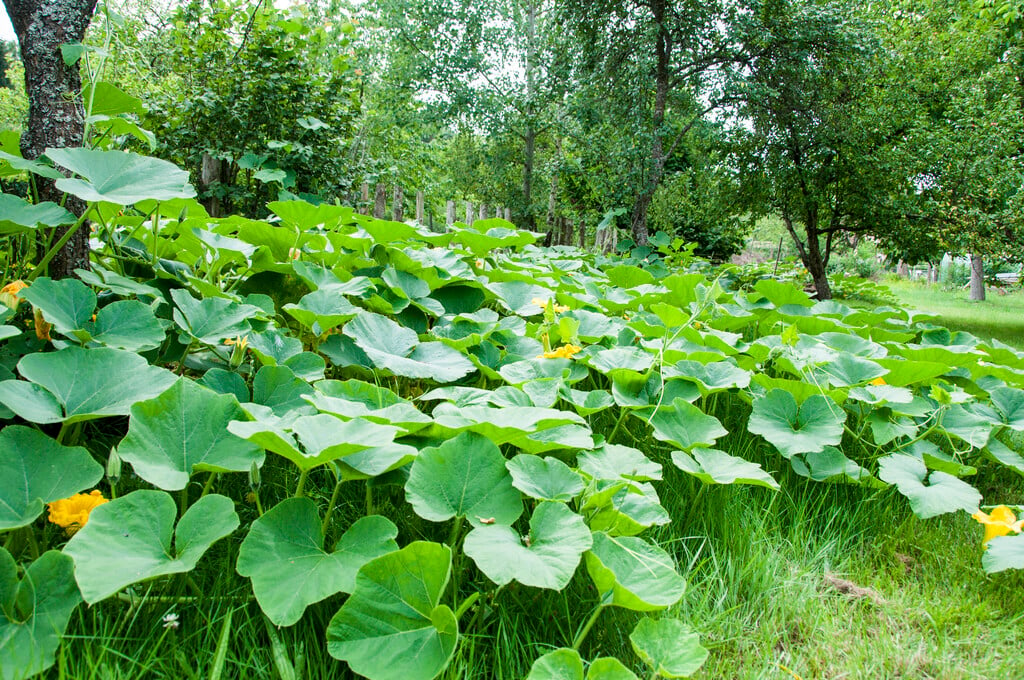Cucurbita maxima
great pumpkin
An annual which scrambles along the ground and over low shrubs, reaching 5m if unchecked. It has large green palmate leaves and yellow flowers. These develop into a huge range of fruit shape, colour and skin texture. A great many named cultivars are available, some of which do not spread but all are edible
Size
Ultimate height
0.1–0.5 metresTime to ultimate height
1 yearUltimate spread
2.5–4 metresGrowing conditions
Moisture
Moist but well–drained, Well–drainedpH
Acid, NeutralColour & scent
| Stem | Flower | Foliage | Fruit | |
| Spring | Green | |||
|---|---|---|---|---|
| Summer | Yellow | Green | ||
| Autumn | Yellow | Green | Green Yellow | |
| Winter |
Position
- Full sun
Aspect
South–facing or West–facing
Exposure
Sheltered Hardiness
H2Botanical details
- Family
- Cucurbitaceae
- Native to GB / Ireland
- No
- Foliage
- Deciduous
- Habit
- Spreading branched, Trailing
- Potentially harmful
- Humans/Pets: If crop is bitter, don't eat or feed to pets. Wear gloves and other protective equipment when handling
- Genus
A small genus of climbing or trailing, annual herbaceous fruits. Several edible species are cultivated for food and other uses. Native to Central and South America. Solitary, star-shaped flowers are usually golden-yellow. Leaves are palmately lobed, covered with tiny, prickly hairs
- Name status
Correct
How to grow
Cultivation
Grow in rich, fertile, well drained soil in full sun. For more advice see pumpkin cultivation
Propagation
Propagate by seed. See sowing vegetable seeds
Suggested planting locations and garden types
- Edible fruit
Pruning
No pruning required
Pests
Diseases
May be susceptible to grey moulds and powdery mildews
Get involved
The Royal Horticultural Society is the UK’s leading gardening charity. We aim to enrich everyone’s life through plants, and make the UK a greener and more beautiful place.

